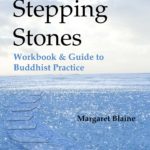I received a question this week, “How did you do your human revolution? Let’s be very clear. I haven’t finished my human revolution. I’m still in process just as the rest of you are.
For those of you unfamiliar with the term, human revolution is the internal transformation that takes place when you practice Nichiren Buddhism.
I have been practicing since 1994. My now husband sponsored me and even though I had done another spiritual practice for many years, I realized that if we were going to be together we probably needed to be on the same spiritual path.
I learned gongyo. Once my husband makes up his mind to do something, he is excellent at follow through. He helped keep me on the straight and narrow with a consistent daily practice during my first year when I was establishing the new habit.This was a benefit for me because at that time I was short on follow through. As part of our practice we read a daily encouragement or the Buddhist calendar. These are not long, a paragraph maybe, but they do help to remind me of our Buddhist philosophy. I think these encouragements are important because our cultural training is so different from what we learn in the practice.
Two of the concepts,that have really helped guide me, are oneness of self and the environment and the simultaneity of cause and effect. Since this is a Buddhism of true cause, I understood early on that my thoughts words and actions of today will manifest in the future, creating my future life. I got it. I needed to really watch what I was doing, saying and thinking, what I was projecting to the universe.
Knowing about these two concepts made me think seriously about what I was projecting when I was laid off of one of my two part time jobs.I was a practicing counselor split between two agencies. After a brief moment of panic, I remembered I had the practice, so I sat down and started chanting for the perfect job for me. I refused to look at my fears, only at what I wanted to happen. I didn’t know what the job would look like or how I was going to get there, but I trusted that the Mystic Law would guide me. Then I took action and got my resume ready.
I told my supervisor in my remaining job that I would like to work full time. I never could have imagined what actually happened. A week later he called me into his office and told me that he was planning to move on and leave the agency. He offered me his position, which mean’t I was given the opportunity to run the social work division. It turned out to be a job I absolutely loved –the perfect job for me.
President Ikeda says that we should always do the best we can and he is a wonderful demonstration of that. I have watched videos of him and seen what he has done as he travels around the world. When faced with major obstacles he gears in and uses the practice to overcome them. I saw that when he felt something needed to be done, he didn’t give in to fears but chanted about it and just did it –such as talking to the head of Russia and China which ended up preventing a war.
When he faced the enmnity of Nichiren Shoshu, He didn’t give in but kept on moving forward no matter what. I’ve tried to model my behavior on his.
I have had many examples of actual proof since I started to practice. Each goal that I have achieved has taught me something about this Buddhism and solidified my faith.
But it has been through one inconspicuous benefitafter another, unrecognized at the time, which have brought me to be doing the work I am now, writing and speaking about Buddhism. When I started the practice, I was a mental health counselor professionally but had always felt that there should be a spiritual component in the work I was doing. That wasn’t possible as I had a license and there were only certain ways you could work with a client. But I kept hearing the experiences of members and realized that what I was hearing was what I had been looking for as a therapist, a way that really worked to help people become happy. I felt my life was split.
About three years after I started chanting, my sister suggested we do a writing course together and then a critique group. This was an unrecognized benefit. I had begun to learn the craft of writing. Concurrently I was proving the practice to myself. Over the next few years, I taught Buddhism at a prison and heard experiences from the prisoners. That experience honed my ability to explain concepts. WhenI was asked to be a district leader I saw the benefit of the practice in people’s lives. I also saw some of the struggle. I introduced new people then watched their lives turn around and become happy.
All along, I have stayed close to other experienced practitioners. My husband and I have hosted weekly meetings at our house for many years. When I became a district leader, three experienced leaders and I chanted an hour together and discussed Buddhism five mornings a week over a nine year period.
Ten years into learning the craft of writingI realized there was only one thing I wanted to write about –this Buddhism. When I retired, I was free to pursue my passion. My life changed from being split between my clinical practice and my spiritual life, to unify in the work I loved the best,writing about and supporting people in this Buddhism.
First, I wrote Your Path to Unshakeable Happiness to help practitioners who were introducing new people.
Writing that book was a major spiritual battle. I had tremendous resistance to doing the work until I read the War of Art where Steven Pressfield says, “ The more important a call or action is to our soul’s evolution, the more Resistance we will feel towards pursuing it.” This book must be very important to my evolution, I thought.
I chanted to overcome my resistance and then chanted about the book. I began to get ideas so fast that I would sit in front of the gohonzon with a yellow pad taking notes. Somedays I would come away with three or four pages. Another benefit, my critique group of brand new people, forced me to clarify my writing so they could understand Buddhism. If I couldn’t explain it so they could understand it, how could I explain it to anyone else?


Thank you Margaret. Your journey is encouraging. I hope to inspire others and speak and/or write a book some day, too. Thanks again!! ar
You’re welcome. I hope you will do it.
Wonderful. Am delighted to have discovered your blog, thank you.
Hopeit wil be useful.